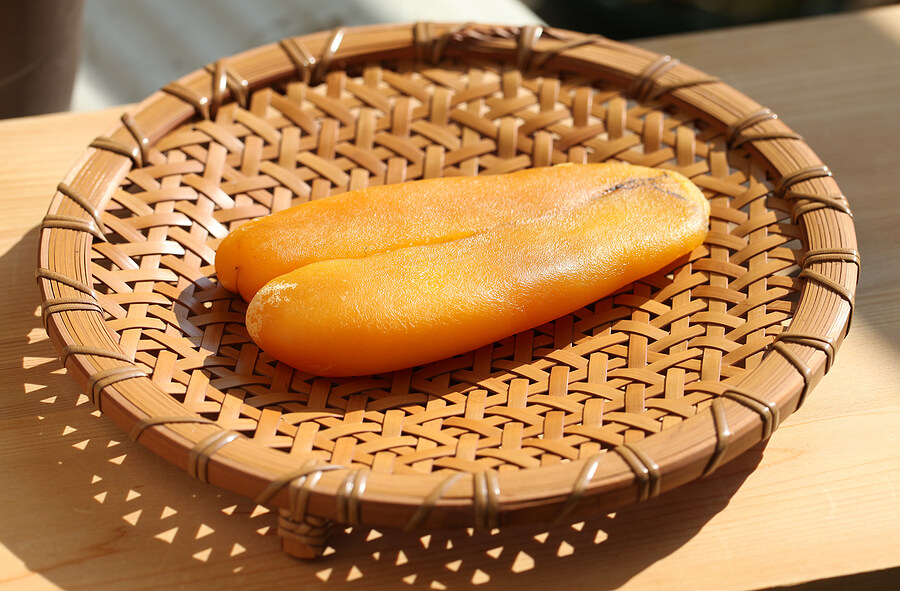History & Heritage
10.1.2020
All you need to know about boutargue, the caviar of the Mediterranean basin

Nicknamed “southern caviar” or “Mediterranean caviar”, boutargue is a coveted speciality, and for good reason : it is a rare natural product, made entirely by hand. Although it is part of Tunisia’s culinary heritage, its consumption has spread to several Mediterranean countries.
In Antiquity, boutargue, or bottarga was already consumed. Some say that it was invented in Egypt 4000 years ago, others attribute it to the Jews of Constantinople. So what is it really? We take stock of this treasure of the sea, with Pierre-Brice Lebrun, a writer specialized in gastronomy who spent several years in Tunisia.
What are the origins of boutargue?
Egypt, Italy, Greece… We don’t know exactly! It is said (without certainties!) that the Jews who came from Constantinople to settle in Tunisia would have brought the boutargue with them, under the Ottoman Empire between the 16th and 19th centuries. But another theory suggests that boutargue was imported into France by the Phoceans when they founded Marseille in the 6th century BC, or via the Phoenicians from Tunisia.
Where does the name “boutargue” come from?
The word “boutargue” comes from the Coptic word “outarakhon”. Then, it would have become in Arabic “boutharkha” or “bitarikha”, which means “dried and salted fish eggs”. The name itself is linked to the verbal root “battarikh”, which means “preserved in brine”. Today, the Italians call this seafood speciality “bottarga” and the French “boutargue” or “poutargue”.
What exactly is boutargue?
Boutargue is a culinary speciality based on fish roe. They can come from the mullet cabot, the wolf or the bluefin tuna. The eggs are spread over two large bunches, wrapped in a very fine pouch called roe. These eggs are harvested between September and October, when the mules are getting ready to lay. Once harvested, the eggs are washed, salted, pressed, drained, and dried in the sun.
Why is boutargue expensive?
The price is high for various reasons. Firstly, because eggs can only be harvested two months of the year, and secondly, because the manufacture of the product cannot be mechanized. It is necessary to open, delicately, with a knife the belly of the mule and extract the two bunches of eggs without tearing the very fine envelope that holds them together. Then comes a traditional salting process and exposure to the sun for several days. To ensure its preservation, bottarga is soaked in a paraffin bath or wrapped in a nylon bag. In Tunisia, the price per kilo of eggs can reach 250 dinars (75/80 €). The best bottarga can be found in Tinja, in Bizerte.
The boutargue is very popular in Tunisia. How is it consumed there?
Among Tunisian Jews, it is eaten as an aperitif, cut into small pieces or thin strips with bread and butter. It is sprinkled with olive oil and lemon juice, seasoned with a pinch of pepper, but never salt! It is served with boukha, a Tunisian alcohol made from figs. In Mediterranean countries, it is also grated over pasta with garlic. Closer to truffle than caviar, boutargue can also be eaten in slices on scrambled eggs or toast.
Special thanks to Pierre-Brice Lebrun, author of a “Petit traité de la boulette” and “Petit traité du pois chiche” published by Le Sureau.
popular

